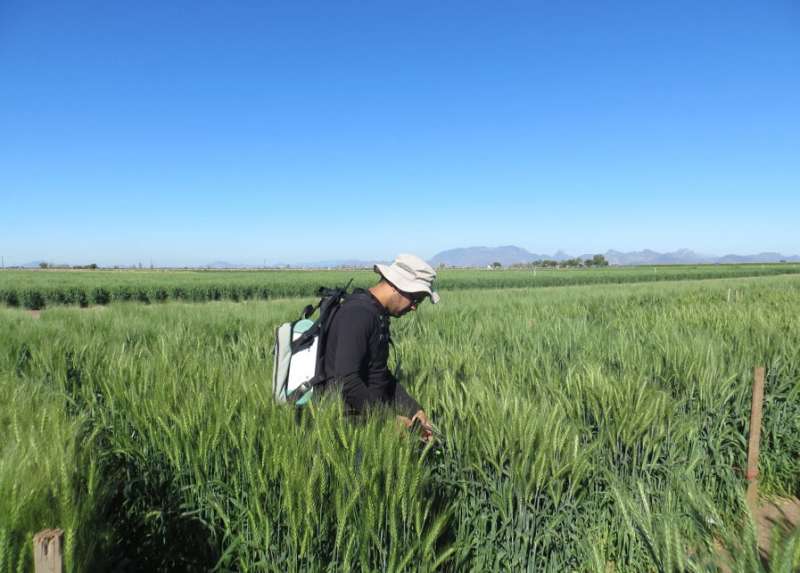Professor John Evans, CoETP. Credit: ARC Centre of Excellence for Translational Photosynthesis
In a future not far away, a drone sweeps over a wheat crop and, by detecting leaf reflectance, sends a signal to the laptop of a crop breeder sitting in the shade. The signal shows her which plants contain the best genes to survive the next predicted long summer drought.
Crop breeders are always looking for faster and non-invasive methods to find traits that make crops more productive or resistant to drought or pests. In a recent publication, scientists found that measuring the color of light reflected from leaves contains a temperature signal, a discovery that will accelerate dramatically the process of finding useful crop traits.
"Until now, we have been dealing with a vast field of data that contains many useful but well-hidden traits, a bit like trying to find specific words in a book with millions of pages. Now, we have discovered bookmarks made of reflected light that can find the most useful words," says ARC Centre of Excellence for Translational Photosynthesis (CoETP) Professor John Evans, co-author of the recent paper published in the Journal of Experimental Botany.
"The most exciting result from this paper is that we found that the leaf reflectance spectrum—also called hyperspectral reflectance—varies with temperature, in other words, that leaf reflectance contains a temperature signal that we can now use to estimate other parameters," says Australian National University (ANU) Professor Evans.
The possibilities for wheat breeders that this optical measurement opens are enormous. Using hyperspectral reflectance now enables the screening of traits that previously would have taken an impossible amount of time with other methodologies. It means that in the future, breeders will be able to just sweep over a crop using a drone or a phenotyping vehicle, and simultaneously detect many useful traits that currently are either too time consuming to detect or require destructive sampling and further analysis to determine. This opens a door to capturing a new suite of characteristics that haven't been amenable to selection before.
"The beauty of this technique is that with a single measurement, you can deduce many different traits such the activity of the main photosynthetic enzyme Rubisco, the rates of electron transport and respiration and leaf nitrogen content."
Discovering useful genes is especially difficult in wheat, as it contains forty times more base pairs than rice and six times more than a human. Consequently, as we need to measure a large number of plants, the method must be fast.
In previous work, Centre scientists have shown that measuring hyperspectral reflectance is an effective and fast way to map plant populations to get to the genetic basis of useful traits, check how these traits perform in the field and then finally apply them into a breeding program.
"It was not clear from our previous work if these measurements were impacted by the leaf temperature at the time of measurement. We know that things like the rate of enzyme reactions vary considerably as temperature changes. The experiment reported in this paper shows that traits that vary with temperature, as well as traits that should be independent of temperature, can be robustly predicted from the same hyperspectral measurement with leaf temperatures that varied between 20 to 35°C," he says.
More information: Hammad A Khan et al. Effect of leaf temperature on the estimation of photosynthetic and other traits of wheat leaves from hyperspectral reflectance, Journal of Experimental Botany (2020). DOI: 10.1093/jxb/eraa514
Provided by ARC Centre of Excellence for Translational Photosynthesis
























